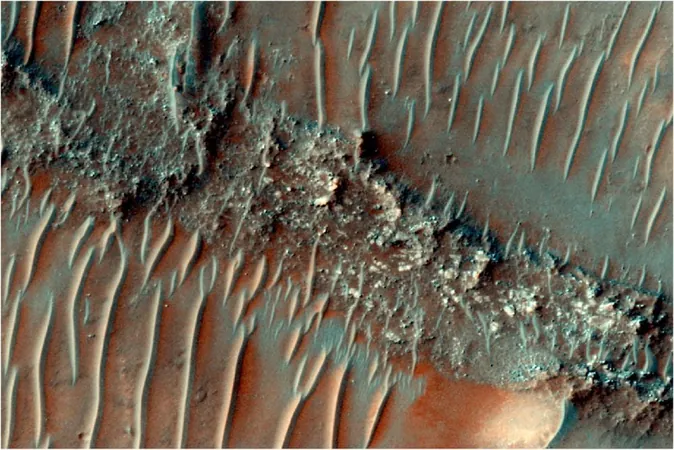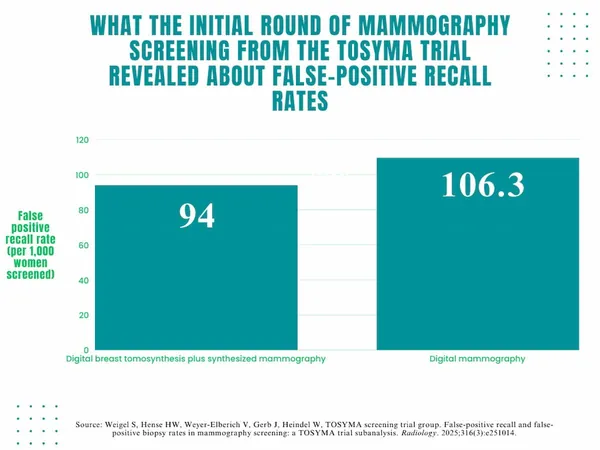
Unveiling Mars' Ancient Wet Legacy: Discoveries from Noachis Terra
2025-07-11
Author: Rajesh
Mars: A Planet Rich in Water History
There's no doubt left in the scientific community about Mars' watery past. The evidence is staggering—from orbital images capturing river channels to rovers uncovering minerals that only emerge in the presence of water. The big question now is not whether water existed, but the extent of its presence over time.
Spotlight on Jezero Crater and Mars Reconnaissance Orbiter
Among NASA's fleet, the Mars Reconnaissance Orbiter (MRO) shines brightest in revealing Mars' secrets. One of its most celebrated images features Jezero Crater, the landing site for the Mars Perseverance rover, showcasing a delta where an ancient river once flowed into a lake. This crater illustrates a rich history with clays and carbonate salts indicating past water activity.
Dueling Theories of Mars' Climate History
Scientists debate the nature of this watery era, categorizing their theories into two camps. The 'warm and wet' theory posits long periods of stable water, while the 'cold and dry' theory suggests brief intervals when climate changes melted ice sheets, carving the landscape. Each theory offers unique predictions for future explorations.
New Insights from Noachis Terra
New research presented at the Royal Astronomical Society's National Astronomy Meeting adds a layer to this discussion. Led by PhD student Adam Losekoot from the Open University, the study focuses on Fluvial Sinuous Ridges (FSRs) as evidence for a previously underexplored region, Noachis Terra.
"Exploring Noachis Terra is thrilling because it’s a geological time capsule, offering insights into processes no longer observable on Earth," remarked Losekoot.
Discovering Fluvial Sinuous Ridges
Unlike Valley Networks, often cited as indicators of water on Mars, FSRs offer an alternative narrative. These winding ridges were formed from sediments transported by flowing water. As Martian waters receded, erosive forces sculpted these high, narrow structures across the landscape.
Mapping the Evidence of Ancient Water Flow
Using NASA’s MRO and its advanced imaging technology, Losekoot and his team identified an astonishing 15,000 km of FSRs in Noachis Terra. These ridges indicate that water had long-lasting effects on the terrain, providing further support for the 'warm and wet' theory.
Implications of the Findings on Mars' Climate
Losekoot noted, "The distribution and size of these FSRs suggest a generous source of water, likely due to steady precipitation. This indicates that Noachis Terra experienced a warm and wet climate approximately 3.7 billion years ago, rather than isolated wet periods followed by dryness."
Mars: A Complex and Dynamic World in the Past
This groundbreaking research not only enriches our understanding of Mars but also emphasizes that the Red Planet was once a much more complex and active environment than we observe today. With each new finding, we delve deeper into Mars’ rich narrative, opening the door to further exploration and discovery.


 Brasil (PT)
Brasil (PT)
 Canada (EN)
Canada (EN)
 Chile (ES)
Chile (ES)
 Česko (CS)
Česko (CS)
 대한민국 (KO)
대한민국 (KO)
 España (ES)
España (ES)
 France (FR)
France (FR)
 Hong Kong (EN)
Hong Kong (EN)
 Italia (IT)
Italia (IT)
 日本 (JA)
日本 (JA)
 Magyarország (HU)
Magyarország (HU)
 Norge (NO)
Norge (NO)
 Polska (PL)
Polska (PL)
 Schweiz (DE)
Schweiz (DE)
 Singapore (EN)
Singapore (EN)
 Sverige (SV)
Sverige (SV)
 Suomi (FI)
Suomi (FI)
 Türkiye (TR)
Türkiye (TR)
 الإمارات العربية المتحدة (AR)
الإمارات العربية المتحدة (AR)